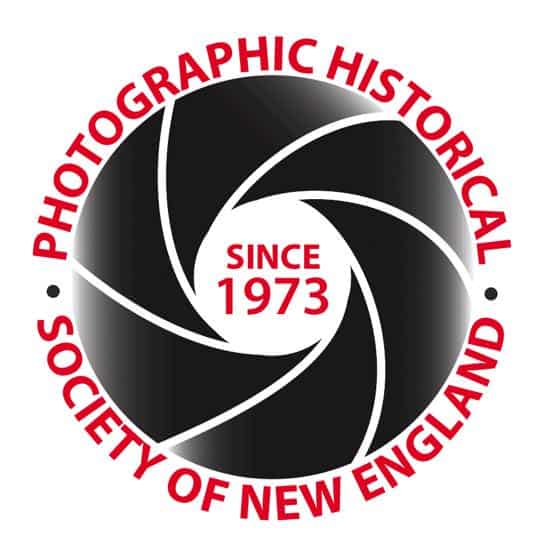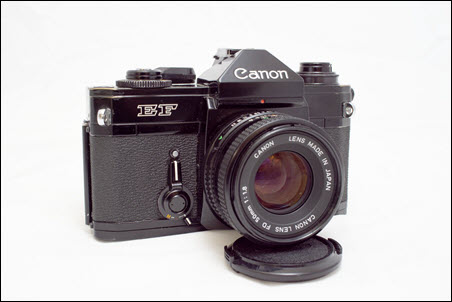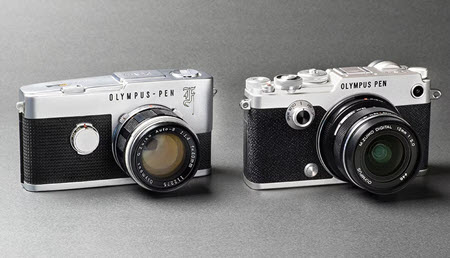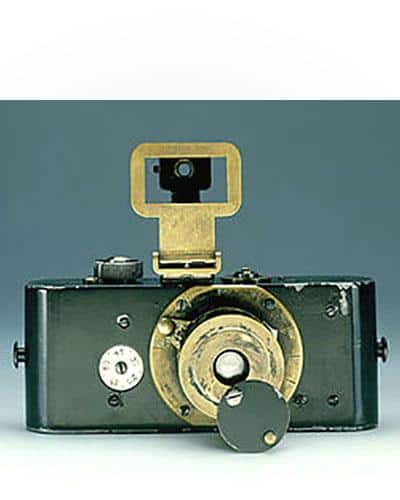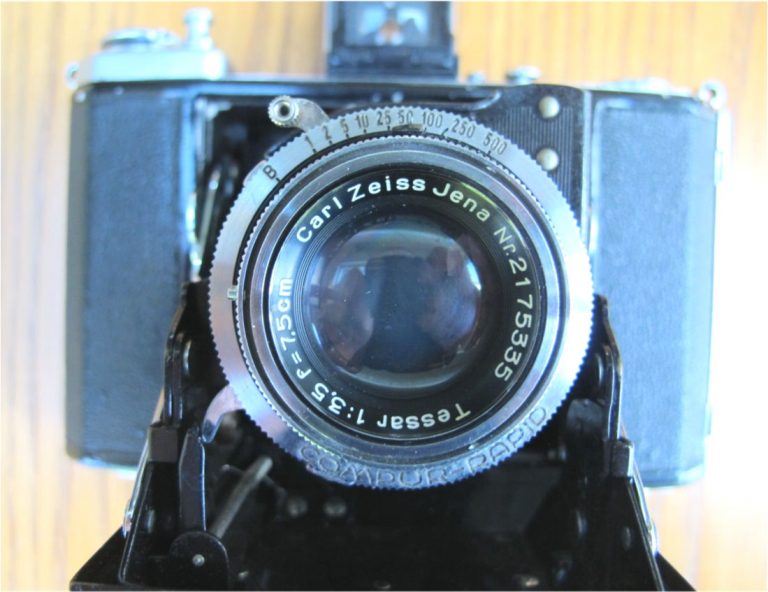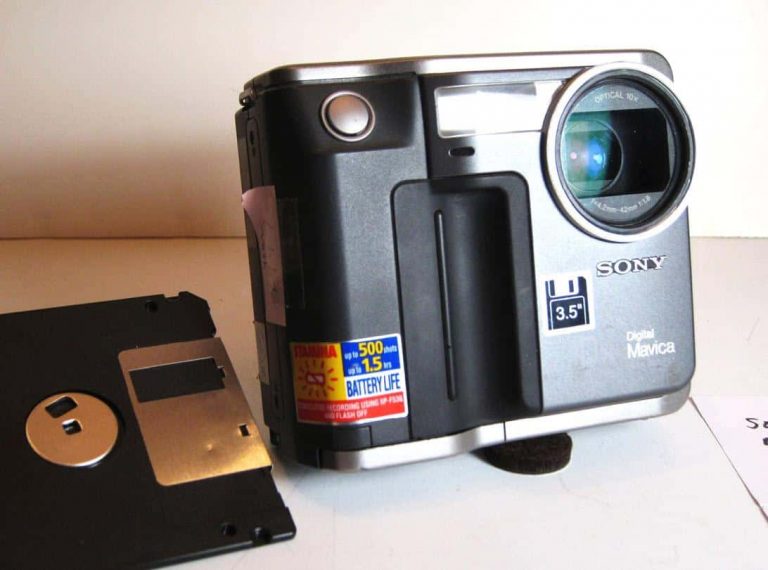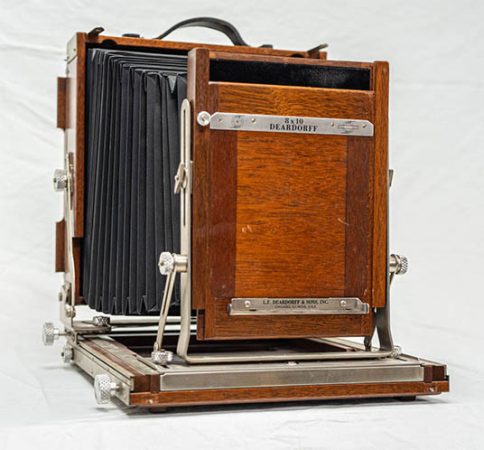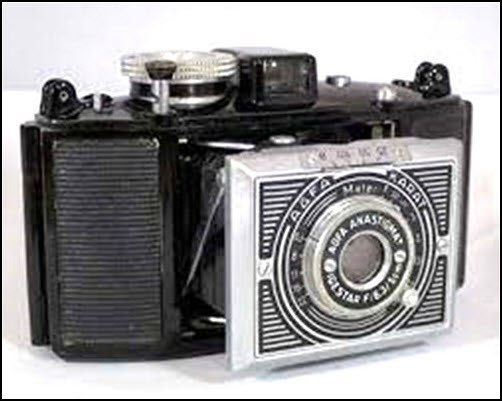The Canon EF (1973-1976) is a high-quality 35mm SLR which blended elements of Canon’s professional F-1 (1971-1981) system (FD breech-lock lens mount, all-metal body in black enamel) with many innovative features. While the EF did not have a removable prism, interchangeable focusing screens, or motor drive capabilities, its ergonomics and other features stand out. The EF also began the path which led Canon to “cross the chasm” with the microprocessor-controlled AE-1 (1976), the most successful 35mm SLR ever: 5.7 million cameras 1976-1986.
The EF used a vertical-travel metal Copal Square shutter (a first and only for Canon), with hybrid electro-mechanical timing. The mechanical timing was 1/1000 to 1/2 sec; the electronically-controlled long exposures ran from 1 to 30 seconds. The shorter vertical shutter distance raised flash sync to 1/125 sec.
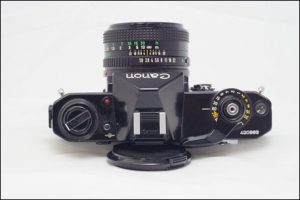
While aperture-priority auto-exposure had been around for a few years, Canon wanted a shutter-priority auto-exposure system. The FD lenses introduced with the F-1 had an “A” (or circle on the earliest versions) button on the diaphragm ring for auto-exposure use. The light meter could capture the aperture at a given shutter speed to set the correct exposure. Another advance was the silicon blue cell inside the pentaprism. It measured light from the focusing screen (60-40 center-weighted) with reduced emphasis on the upper edge of the screen to prevent underexposure due to bright skies.
The silicon cell was far more sensitive than CdS cells in current use; EV range was 18 to -2 at ASA 100 — twenty f-stops — which likely encouraged photographers to test long electronically-timed exposures. The aperture settings and shutter speeds were visible in the viewfinder: a frame around the current shutter setting, and the meter needle pointing to the (auto) exposure setting. Manual settings were easy; shift the diaphragm away from the lens’ “A” button and find the correct shutter/aperture combination.
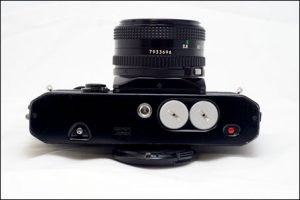
FD, FL, and R lenses could operate in manual stop-down metering mode via the multi-purpose self-timer. Along with the usual self-timer functions, pushing the lever towards the lens would stop down the lens; moving the inner lever away from the lens locks the mirror up or release it.
Touring the EF’s exterior: the top right holds a large well-marked shutter speed dial with the shutter button in the center—an excellent ergonomic choice—next to the film wind lever and film counter. The all-important power switch just below the film advance lever turns on the light meter, unlocks the shutter button, and pops out the film advance lever. Double exposures are easy; press the small button in the middle of the power switch, wind the advance lever and the shutter is cocked but the film hasn’t moved, nor has the film counter.
The film rewind release is on the bottom plate, along with the two battery compartments, and a red battery test button. To test, press the red button, then look at the left top of the camera for the red blinking light near the film rewind. Blinking quickly is good, slow or not blinking means it’s time to replace the batteries. ASA (12-3200) settings for the meter are under the film rewind crank. Next to the rewind crank is the AE hold button. To lock an AE exposure setting while reframing, press the AE lock button to hold the setting until the shutter is pressed.
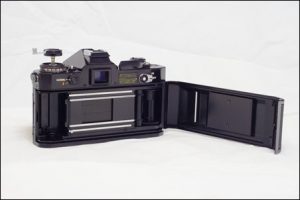
In retrospect, one of the best and most important features of the EF is invisible: a voltage regulator built into the camera. Designed back when now-banned PX13 1.35v mercury batteries were everywhere, the camera works perfectly with 1.5v PX625 alkaline or silver oxide batteries. There are two separate battery holders: one for the light meter and one for the shutter; replace both when needed. However, the EF is a notorious battery hog, especially if the power switch is on with the lens covered. Bring extra batteries or a backup light meter; it’s a fully manual camera from 1/1000 to 1/2 sec along with the full range of manual diaphragm settings.
The presence of the voltage regulator, along with the camera’s reliability, build quality, working electronics, a wide array of FD and FL lenses, and the sheer pleasure of holding it up to your eye, make this 50-year-old classic an excellent choice for getting back into the world of film photography.
Even the Canon Camera Museum thinks it’s a classic:
“This camera’s main feature was the first and last of its kind. It was the Copal Square, a vertical-travel, metal-curtain, focal-plane shutter. The camera’s specifications and ease of use were ideal for aged users.” Q.E.D. Bravo, Canon!
What the heck…
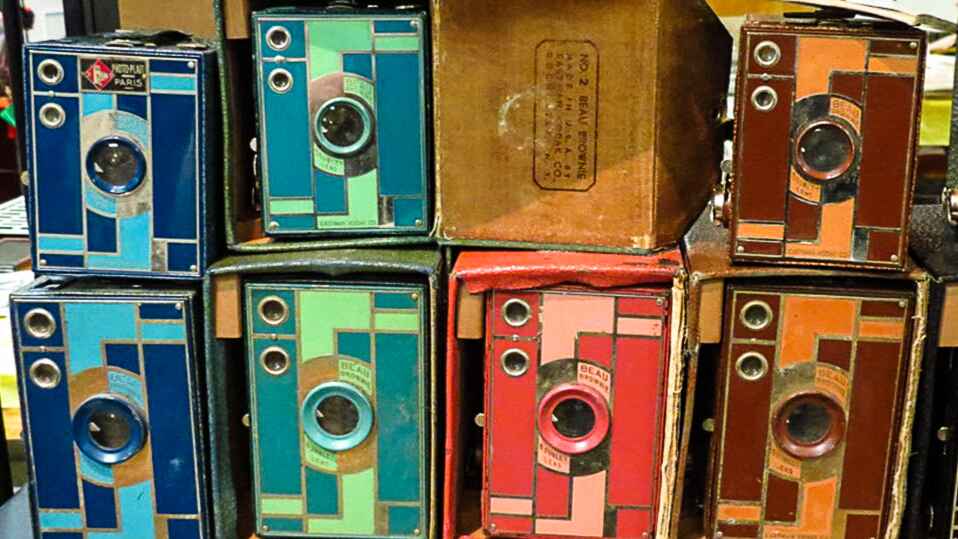
Are Those Even Cameras?!
Join the PHSNE Newsletter and learn more about photographic history and preservation. Already an expert? Come and share your collections and knowledge as we celebrate the history and advancement of photography.
